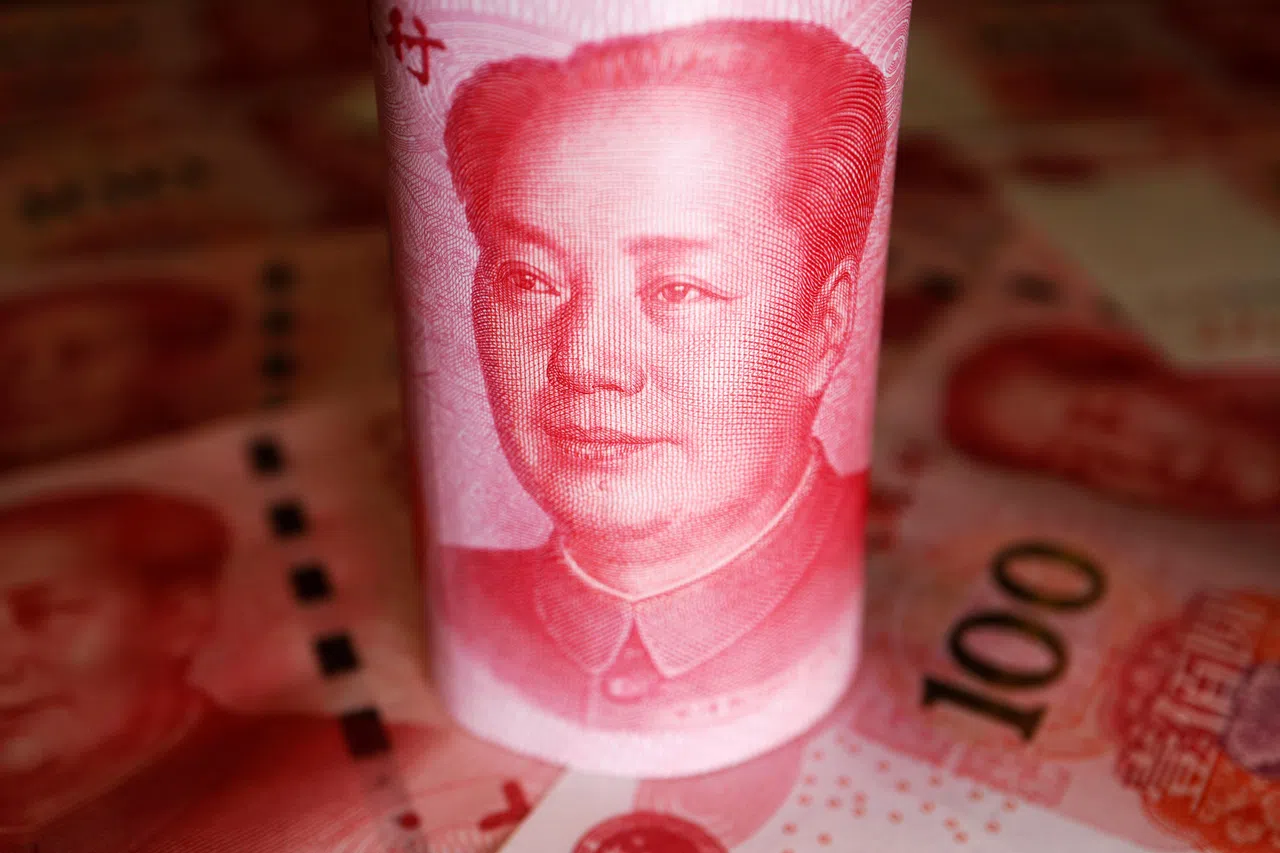TRADERS will keep a closer eye than usual on Monday (Apr 8) on China’s daily yuan reference rate, looking for signs of official pushback after the currency weakened towards a no-go area last week.
After the yuan slipped to within a whisker of its permitted trading range against the US dollar last Wednesday, before a four-day holiday weekend, the so-called fixing may signal whether Beijing will support the currency more vigorously or allow a moderate depreciation. As a regional currency anchor, any message which triggers yuan volatility can quickly spill over into other markets.
A figure significantly stronger or weaker than 7.0950 per US dollar – broadly the last fixing level – would send respective signals of support or tolerance for a lower yuan, while something close to it would imply that stability is key. China manages its currency onshore by setting a daily reference rate against the US dollar at 9.15am local time, around which it is then permitted to trade in a 2 per cent range.
China’s policymakers have always been vigilant of currency pressure which can spill over to local stocks and bonds, despite the fact that the country’s export engine would benefit from a weaker yuan. Stability is prized because rapid yuan drops can also lead to a vicious cycle of capital outflows and exacerbated losses.
But last month, a surprise weaker-than-expected fixing unleashed a slide in the yuan and pulled down its Asian peers along the way. A series of stronger fixes followed, which slowed yuan declines but at the cost of sending mixed signals to investors on Beijing’s currency intentions.
Now, resilient US economic data and bets that the Federal Reserve will deliver fewer rate cuts than previously priced in are lending support to the US dollar. That’s also weighing on the yuan.
GET BT IN YOUR INBOX DAILY
Start and end each day with the latest news stories and analyses delivered straight to your inbox.
What China “discovered is that there was a heck of a lot more depreciation and selling pressure under the surface than they probably anticipated”, said Richard Franulovich head of foreign-exchange strategy at Westpac Banking. “This is what happens periodically when you have a managed currency.”
While the People’s Bank of China (PBOC) has “plenty of firepower” to manage the yuan, the macro-economic environment points to more weakness as the year progresses, he added.
When asked what the mood was like on the trading floor at fixing time, one StoneX Financial trader’s response was “anxious”.
“After similar fixes, people get numb and it suggests PBOC is happy with the status quo,” said Mingze Wu, a foreign-exchange trader at the firm in Singapore. “But if the dollar-yuan fix drops another big figure lower, then I think panic will set in.”
The PBOC has kept the daily rate in such a tight range this year that a gauge of volatility in the fixing has dropped to the lowest since before the shock yuan devaluation of 2015.
“A sub 7.10 fixing means a holding pattern,” said Ju Wang, head of greater China foreign-exchange and rates strategy at BNP Paribas. BLOOMBERG






